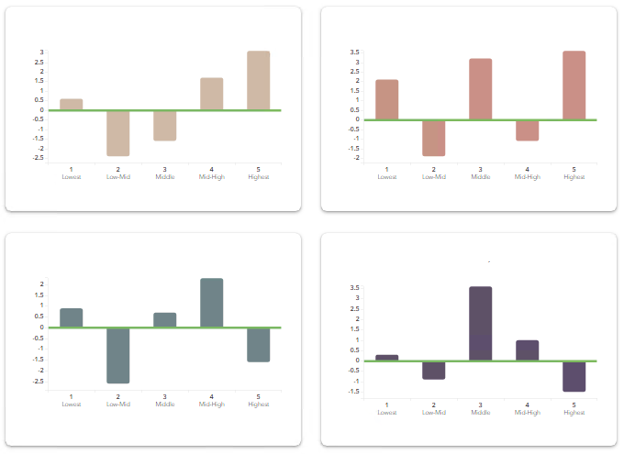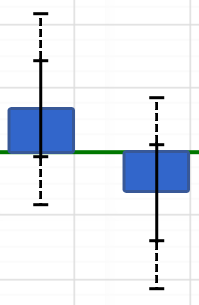- Using PVAAS for a Purpose
- Key Concepts
- PEERS
- About PEERS
- Understanding the PEERS pages
- Evaluation List
- Evaluation Summary
- Evaluation Forms
- Add Educator
- Add Evaluator
- Manage Access
- Add a school-level Educator to PEERS
- Add a district-level Educator to PEERS
- Add the Evaluator permission to a user's account
- Remove the Evaluator permission from a district user's account
- Add the Evaluator or Administrative Evaluator permission to a district user's account
- Remove the Administrative Evaluator permission from a district user's account
- Remove an Educator from PEERS
- Restore a removed Educator
- Assign an Educator to a district-level Evaluator
- Assign an Educator to an Evaluator
- Unassign an Educator from an Evaluator
- Assign an Educator to a school
- Unassign an Educator from a school
- Link a PVAAS account to an Educator
- Working with Evaluations
- Switch between Educator and Evaluator
- View an evaluation
- Use filters to display only certain evaluations
- Print the Summary section of an evaluation
- Understanding evaluation statuses
- Determine whether other evaluators have access to an evaluation
- Lock or unlock an evaluation
- Save your changes
- Mark an evaluation as Ready for Conference
- Release one or more evaluations
- Download data from released evaluations to XLSX
- Make changes to an evaluation marked Ready for Conference
- Reports
- School Reports
- LEA/District Reports
- Teacher Reports
- Comparison Reports
- Human Capital Retention Dashboard
- Roster Verification (RV)
- Getting Started
- All Actions by Role
- All Actions for Teachers
- All Actions for School Administrators or Roster Approvers
- Manage teachers' access to RV
- Assign other school users the Roster Approver permission
- View a teacher's rosters
- Take control of a teacher's rosters
- Add and remove rosters for a teacher
- Copy a roster
- Apply a percentage of instructional time to every student on a roster
- Batch print overclaimed and underclaimed students
- Remove students from a roster
- Add a student to a roster
- Return a teacher's rosters to the teacher
- Approve a teacher's rosters
- Submit your school's rosters to the district
- All Actions for district admin or district roster approvers
- Assign other LEA/district users the Roster Approver permission
- Take control of a school's rosters
- View a teacher's rosters
- View the history of a teacher's rosters
- Edit a teacher's rosters
- Add and remove rosters for a teacher
- Copy a roster
- Apply a percentage of instructional time to every student on a roster
- Batch print overclaimed and underclaimed students
- Return a school's rosters to the school
- Approve rosters that you have verified
- Submit your district's rosters
- Understanding the RV Pages
- Viewing the History of Actions on Rosters
- Additional Resources
- Admin Help
- General Help
LEA/District Diagnostic |  |
Interpreting the Data
The Bar Chart
The purpose of the LEA/District Diagnostic reports is to help the LEA/district assess the growth of students at different achievement levels. These reports can help teachers and admins set priorities for improving the instructional program to meet the needs of students at all achievement levels.
To compare growth across groups, it can be helpful to focus on the chart first.
In this chart, the green line represents the growth standard. The blue bars represent the growth of students in the most recent year. On the and reports, if you have data from previous years, you'll also see gold bars on the chart. The gold bars represent the growth of students for this LEA/district in the same subject and grade or Keystone content area for up to three previous years. In other words, the blue bars represent the cohort of students from the most recent year, while the gold bars represent previous years' cohorts. No data for previous years is displayed in the Custom Diagnostic report.
Each bar has solid and dotted black whiskers. The solid whiskers mark one standard error above and below the growth measure, and the dotted whiskers mark two standard errors above and below the growth measure. It's important to consider the standard error as you interpret the growth measures represented by the bars on the chart. Consider the overall pattern of the bars rather than focusing on any individual value. However, it can be helpful to keep these guidelines in mind.
| A bar that is at least one standard error above the line suggests that the group's average achievement level increased. If the bar is at least two standard errors above the line, the evidence of growth is even stronger. |  |
| Likewise, if the bar is at least one standard error below the green line, the group likely lost ground academically, on average. If the bar is at least two standard errors below the line, the evidence is stronger. |  |
| Regardless of whether the bar is above or below the green line, if it is within one standard error of the line, the evidence suggests the group's average achievement did not increase or decrease. |  |
As you reflect on these reports, you might want to ask yourself these questions:
- Did each group make enough growth to at least meet the growth standard?
- Is there a difference in the amount of growth the groups made?
- If there is a difference in the amount of growth across groups, what factors might have contributed to the differences?
For Diagnostic and Performance Diagnostic reports:
- Is the overall pattern of growth consistent across grades for the same subject?
- Is the overall pattern of growth consistent across subjects in the same grade?
- Is the overall pattern of growth consistent across Keystone content areas?
- How does the pattern of growth for demographic subgsets compare to the pattern for all students?
- How can this information inform course placement, instructional practices, strategies, and academic programs?
More Information
Diagnostic and Projection Summary Reports: Using Together for Decision Making